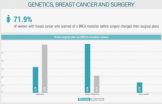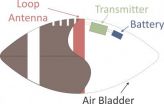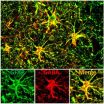(Press-News.org) By now, most people feel comfortable conducting financial transactions on the Web. The cryptographic schemes that protect online banking and credit card purchases have proven their reliability over decades.
As more of our data moves online, a more pressing concern may be its inadvertent misuse by people authorized to access it. Every month seems to bring another story of private information accidentally leaked by governmental agencies or vendors of digital products or services.
At the same time, tighter restrictions on access could undermine the whole point of sharing data. Coordination across agencies and providers could be the key to quality medical care; you may want your family to be able to share the pictures you post on a social-networking site.
Researchers in the Decentralized Information Group (DIG) at MIT's Computer Science and Artificial Intelligence Laboratory (CSAIL) believe the solution may be transparency rather than obscurity. To that end, they're developing a protocol they call "HTTP with Accountability," or HTTPA, which will automatically monitor the transmission of private data and allow the data owner to examine how it's being used.
At the IEEE's Conference on Privacy, Security and Trust in July, Oshani Seneviratne, an MIT graduate student in electrical engineering and computer science, and Lalana Kagal, a principal research scientist at CSAIL, will present a paper that gives an overview of HTTPA and presents a sample application, involving a health-care records system that Seneviratne implemented on the experimental network PlanetLab.
DIG is directed by Tim Berners-Lee, the inventor of the Web and the 3Com Founders Professor of Engineering at MIT, and it shares office space with the World Wide Web Consortium (W3C), the organization, also led by Berners-Lee, that oversees the development of Web protocols like HTTP, XML, and CSS. DIG's role is to develop new technologies that exploit those protocols.
With HTTPA, each item of private data would be assigned its own uniform resource identifier (URI), a key component of the Semantic Web, a new set of technologies, championed by W3C, that would convert the Web from, essentially, a collection of searchable text files into a giant database.
Remote access to a Web server would be controlled much the way it is now, through passwords and encryption. But every time the server transmitted a piece of sensitive data, it would also send a description of the restrictions on the data's use. And it would log the transaction, using only the URI, somewhere in a network of encrypted, special-purpose servers.
HTTPA would be voluntary: It would be up to software developers to adhere to its specifications when designing their systems. But HTTPA compliance could become a selling point for companies offering services that handle private data.
"It's not that difficult to transform an existing website into an HTTPA-aware website," Seneviratne says. "On every HTTP request, the server should say, 'OK, here are the usage restrictions for this resource,' and log the transaction in the network of special-purpose servers."
An HTTPA-compliant program also incurs certain responsibilities if it reuses data supplied by another HTTPA-compliant source. Suppose, for instance, that a consulting specialist in a network of physicians wishes to access data created by a patient's primary-care physician, and suppose that she wishes to augment the data with her own notes. Her system would then create its own record, with its own URI. But using standard Semantic Web techniques, it would mark that record as "derived" from the PCP's record and label it with the same usage restrictions.
The network of servers is where the heavy lifting happens. When the data owner requests an audit, the servers work through the chain of derivations, identifying all the people who have accessed the data, and what they've done with it.
Seneviratne uses a technology known as distributed hash tables — the technology at the heart of peer-to-peer networks like BitTorrent — to distribute the transaction logs among the servers. Redundant storage of the same data on multiple servers serves two purposes: First, it ensures that if some servers go down, data will remain accessible. And second, it provides a way to determine whether anyone has tried to tamper with the transaction logs for a particular data item — such as to delete the record of an illicit use. A server whose logs differ from those of its peers would be easy to ferret out.
To test the system, Seneviratne built a rudimentary health-care records system from scratch and filled it with data supplied by 25 volunteers. She then simulated a set of transactions — pharmacy visits, referrals to specialists, use of anonymized data for research purposes, and the like — that the volunteers reported as having occurred over the course of a year.
Seneviratne used 300 servers on PlanetLab to store the transaction logs; in experiments, the system efficiently tracked down data stored across the network and handled the chains of inference necessary to audit the propagation of data across multiple providers. In practice, audit servers could be maintained by a grassroots network, much like the servers that host BitTorrent files or log Bitcoin transactions.
INFORMATION:
Who's using your data?
New Web technology would let you track how your private data is used online
2014-06-13
ELSE PRESS RELEASES FROM THIS DATE:
Moffitt study shows utilizing genetic health care professional reduces unnecessary testing
2014-06-13
TAMPA, Fla. (June 13, 2014) – A new Moffitt Cancer Center study published Thursday in Genetics in Medicine shows that counseling from a genetic health care provider before genetic testing educates patients and may help reduce unnecessary procedures.
Up to 10 percent of cancers are inherited, meaning a person was born with an abnormal gene that increases their risk for cancer. "Pre-test genetic counseling in which a health care provider takes a thorough family history and discusses the potential risks and benefits of genetic testing is standard of care as recommended ...
BRCA test results affect patients' breast cancer surgery plans
2014-06-13
PROVIDENCE, R.I. [Brown University] —Women diagnosed with breast cancer often face a crucial decision about the extent of their surgical treatment. Many meet national guidelines recommending testing for mutations in the BRCA 1 and 2 genes, which carry a substantial risk of future cancer. A new study reports that among women with breast cancer who undergo recommended testing before surgery, more than 7 in 10 who test positive will change their surgical plan, typically opting for a more extensive procedure such as a double mastectomy and sometimes ovary removal.
"As soon ...
Charity funding study brings alcohol industry influence on UK policy into question
2014-06-13
Five charities in the UK are both active in alcohol policy processes and funded by the alcohol industry, according to a new study published in the European Journal of Public Health.
The study, carried out by researchers at the London School of Hygiene & Tropical Medicine, looks at the relationships between the alcohol industry, charities and policy influence in the UK.
Two of the charities, Addaction and Mentor UK, are the only remaining non-industry, non-governmental members of the Public Health Responsibility Deal's alcohol network – the UK government's initiative ...
New membrane-synthesis pathways in bacteria discovered
2014-06-13
Biologists at the Ruhr-Universität Bochum (RUB) have discovered new mechanisms used by bacteria to manufacture lipids, i.e. fat molecules, for the cell membrane. Those mechanisms are a combination of familiar bacterial synthesis pathways and of such that occur in higher organisms. Thus, the team headed by Prof Dr Franz Narberhaus and Dr Roman Moser has debunked the long-standing theory that lipid production in bacteria differs substantially from that in higher organisms. The results have been published in the journal Molecular Microbiology.
Potential for the pharmaceutical ...
Are female hormones playing a key role in obesity epidemic?
2014-06-13
An imbalance of female sex hormones among men in Western nations may be contributing to high levels of male obesity, according to new research from the University of Adelaide.
In a paper published in the online journal PLOS ONE, researchers from the University's School of Medical Sciences suggest that obesity among Western men could be linked with exposure to substances containing the female sex hormone estrogen – substances that are more often found in affluent societies, such as soy products and plastics.
The research was conducted by University of Adelaide medical ...
Crossing the goal line: New tech tracks football in 3-D space
2014-06-13
Referees may soon have a new way of determining whether a football team has scored a touchdown or gotten a first down. Researchers from North Carolina State University and Carnegie Mellon University, in collaboration with Disney Research, have developed a system that can track a football in three-dimensional space using low-frequency magnetic fields.
The technology could be particularly useful for situations when the ball is blocked from view, such as goal-line rushing attempts when the ball carrier is often buried at the bottom of a pile of players. The technology could ...
Breakthrough for information technology using Heusler materials
2014-06-13
It is the breakthrough that physicists and chemists around the world have long anticipated and it will play a pivotal role in information technology in coming years. Researchers at Johannes Gutenberg University Mainz (JGU) have managed, for the first time, to directly observe the 100 percent spin polarization of a Heusler compound. Heusler alloys are composed of several metallic elements arranged in a lattice structure. They are among those materials that potentially can be used for ever smaller data storage components with ever greater storage capacity. However, doubts ...
Rescue of Alzheimer's memory deficit achieved by reducing 'excessive inhibition'
2014-06-13
A new drug target to fight Alzheimer's disease has been discovered by a research team led by Gong Chen, a Professor of Biology and the Verne M. Willaman Chair in Life Sciences at Penn State University. The discovery also has potential for development as a novel diagnostic tool for Alzheimer's disease, which is the most common form of dementia and one for which no cure has yet been found. A scientific paper describing the discovery will be published in Nature Communications on 13 June 2014.
Chen's research was motivated by the recent failure in clinical trials of once-promising ...
Genotyping can predict disease outcomes in rheumatoid arthritis patients
2014-06-13
New cohort studies presented today at the European League Against Rheumatism Annual Congress (EULAR 2014) have shown the amino acid valine at position 11 of HLA-DRB1 gene to be the strongest independent genetic determinant of radiological damage in rheumatoid arthritis (RA).1 In addition, positions 71 and 74 were found to represent independent predictors, with the three positions together: 11, 71 and 74 strongly associated with disease outcomes.1
According to lead author Dr Sebastien Viatte of the Arthritis Research UK Centre for Genetics and Genomics, Manchester, United ...
Higher health care cost burden of musculoskeletal conditions compared to other diseases
2014-06-13
A new study presented today at the European League Against Rheumatism Annual Congress (EULAR 2014) highlights the increased health care costs associated with musculoskeletal conditions compared to other diseases. Health care costs were almost 50% higher for people with a musculoskeletal condition compared to any other singly occurring condition.1
This disparity remained high where two conditions co-existed, with health care costs still one third higher (36%) for those people with one of their two conditions musculoskeletal in nature, highlighting the significant impact ...
LAST 30 PRESS RELEASES:
Numbers in our sights affect how we perceive space
SIMJ announces global collaborative book project in commemoration of its 75th anniversary
Air pollution exposure and birth weight
Obstructive sleep apnea risk and mental health conditions among older adults
How talking slows eye movements behind the wheel
The Ceramic Society of Japan’s Oxoate Ceramics Research Association launches new international book project
Heart-brain connection: international study reveals the role of the vagus nerve in keeping the heart young
Researchers identify Rb1 as a predictive biomarker for a new therapeutic strategy in some breast cancers
Survey reveals ethical gaps slowing AI adoption in pediatric surgery
Stimulant ADHD medications work differently than thought
AI overestimates how smart people are, according to HSE economists
HSE researchers create genome-wide map of quadruplexes
Scientists boost cell "powerhouses" to burn more calories
Automatic label checking: The missing step in making reliable medical AI
Low daily alcohol intake linked to 50% heightened mouth cancer risk in India
American Meteorological Society announces Rick Spinrad as 2026 President-Elect
Biomass-based carbon capture spotlighted in newly released global climate webinar recording
Illuminating invisible nano pollutants: advanced bioimaging tracks the full journey of emerging nanoscale contaminants in living systems
How does age affect recovery from spinal cord injury?
Novel AI tool offers prognosis for patients with head and neck cancer
Fathers’ microplastic exposure tied to their children’s metabolic problems
Research validates laboratory model for studying high-grade serous ovarian cancer
SIR 2026 delivers transformative breakthroughs in minimally invasive medicine to improve patient care
Stem Cell Reports most downloaded papers of 2025 highlight the breadth and impact of stem cell research
Oxford-led study estimates NHS spends around 3% of its primary and secondary care budget on the health impacts of heat and cold in England
A researcher’s long quest leads to a smart composite breakthrough
Urban wild bees act as “microbial sensors” of city health.
New study finds where you live affects recovery after a hip fracture
Forecasting the impact of fully automated vehicle adoption on US road traffic injuries
Alcohol-related hospitalizations from 2016 to 2022
[Press-News.org] Who's using your data?New Web technology would let you track how your private data is used online


